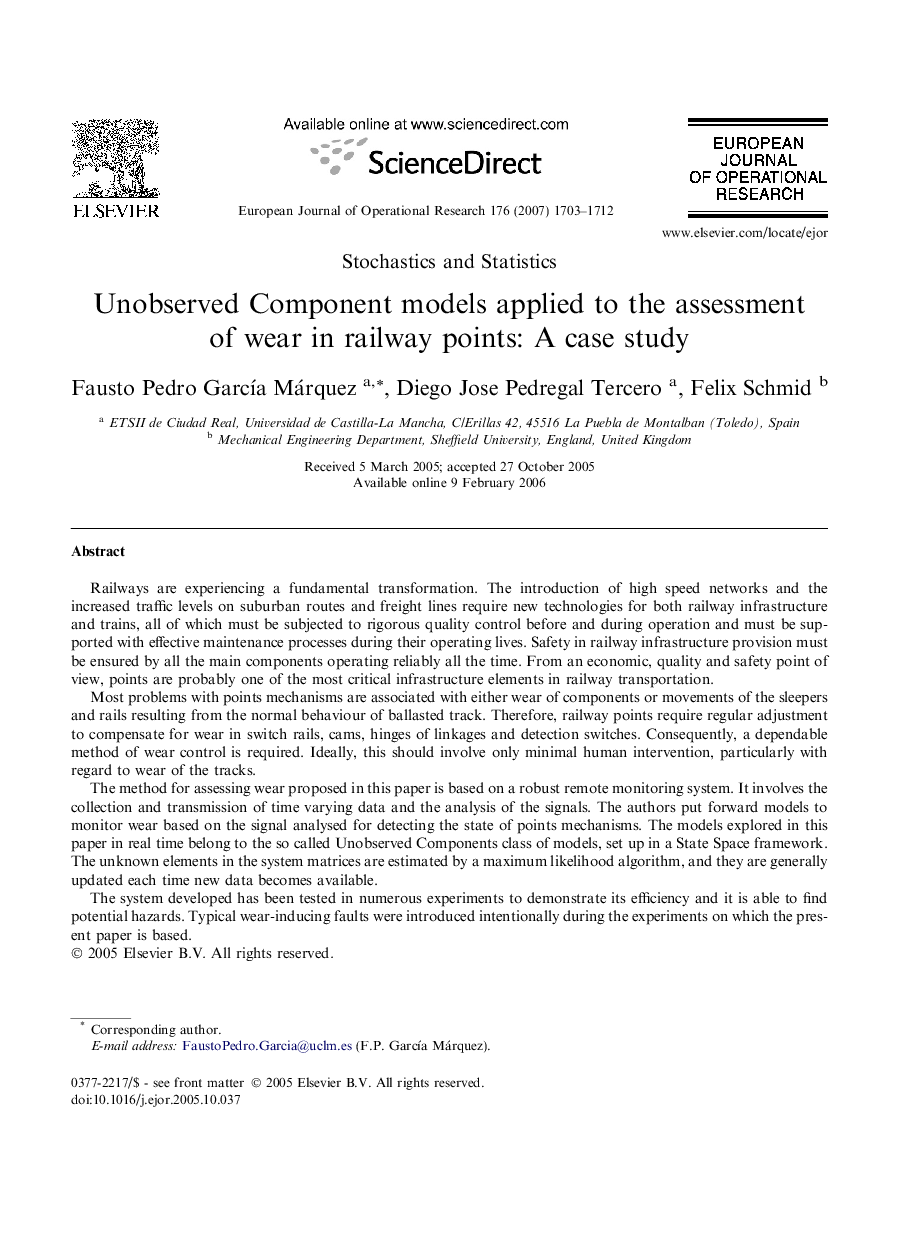| Article ID | Journal | Published Year | Pages | File Type |
|---|---|---|---|---|
| 479288 | European Journal of Operational Research | 2007 | 10 Pages |
Railways are experiencing a fundamental transformation. The introduction of high speed networks and the increased traffic levels on suburban routes and freight lines require new technologies for both railway infrastructure and trains, all of which must be subjected to rigorous quality control before and during operation and must be supported with effective maintenance processes during their operating lives. Safety in railway infrastructure provision must be ensured by all the main components operating reliably all the time. From an economic, quality and safety point of view, points are probably one of the most critical infrastructure elements in railway transportation.Most problems with points mechanisms are associated with either wear of components or movements of the sleepers and rails resulting from the normal behaviour of ballasted track. Therefore, railway points require regular adjustment to compensate for wear in switch rails, cams, hinges of linkages and detection switches. Consequently, a dependable method of wear control is required. Ideally, this should involve only minimal human intervention, particularly with regard to wear of the tracks.The method for assessing wear proposed in this paper is based on a robust remote monitoring system. It involves the collection and transmission of time varying data and the analysis of the signals. The authors put forward models to monitor wear based on the signal analysed for detecting the state of points mechanisms. The models explored in this paper in real time belong to the so called Unobserved Components class of models, set up in a State Space framework. The unknown elements in the system matrices are estimated by a maximum likelihood algorithm, and they are generally updated each time new data becomes available.The system developed has been tested in numerous experiments to demonstrate its efficiency and it is able to find potential hazards. Typical wear-inducing faults were introduced intentionally during the experiments on which the present paper is based.
